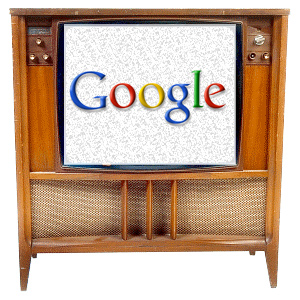September 16, 2010
The future is not now
by Melville House
It was reported in Shelf Awareness yesterday that Ruckus Media Group is launching what appears to be an all-electronic children’s imprint. This is on top of the news from PW Daily today that Ray Kurzweil‘s new pet project, Blio, has a launch date of September 28. Blio is a new type of e-reading software developed for the sorts of rich media experience the iPad (and eventually Android tablets) were made for. Blio joins other ventures that have anticipated feature-rich e-reading experiences for a while now, such as Vook.
While there’s a ton of excitement around all of these new e-book ventures, one can’t help but feel that many of these efforts are just putting the cart before the horse. After all, most of the “enhanced” e-books that have been released so far do little in terms of using the technologies’ inherent features to tell a compelling story. It’s nice having a video embedded when an author is referencing such a video, or being able to tap on a link to a foot note that automatically scrolls to the bottom of the page but, really, where’s the innovation in that? It’s the easy thing to do. It’s a sort of jarring mix of “hot” and “cold” media, and none of the offerings so far seem to acknowledge that.
 It makes sense that a children’s imprint (if you can call an e-book publishing venture an imprint) might be the first to figure out how to tell compelling stories in this new space. After all, successful kids’ books already mix media pretty effortlessly. It is by nature a more collaborative process because often illustrators and authors are different people. And, speaking as a dad who has read quite a few of these things (Mo Willems, if I have to read Knuffle Bunny one more time I’m coming after you!), it goes without saying that kids see both the story and pictures as equally important. That publishers of children’s books — or “enhanced” children’s e-books — will learn how to craft compelling stories seamlessly with these new tools should go without saying.
It makes sense that a children’s imprint (if you can call an e-book publishing venture an imprint) might be the first to figure out how to tell compelling stories in this new space. After all, successful kids’ books already mix media pretty effortlessly. It is by nature a more collaborative process because often illustrators and authors are different people. And, speaking as a dad who has read quite a few of these things (Mo Willems, if I have to read Knuffle Bunny one more time I’m coming after you!), it goes without saying that kids see both the story and pictures as equally important. That publishers of children’s books — or “enhanced” children’s e-books — will learn how to craft compelling stories seamlessly with these new tools should go without saying.
But still, there’s a problem on the adult side of things. From this blogger’s perspective, coming up with something that is engaging in a way that breaks the “hot”/”cold” dichotomy, that tells a story in the language of these new tools (instead of just pretending they’re books wrapped around a TV, or vice versa) is the big challenge. While there are some promising efforts on the horizon by a few creative authors banding together–Neal Stephenson and co.’s Subutai Corp. being an interesting example–one fears that we’ll have to suffer through another year or two of hype and crap before we see something that’s worth a damn. I sure hope I’m wrong.